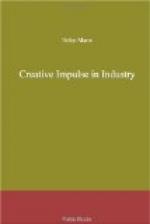While there will be adjustment of the workers, and trials as to the place of each will be made in the shop, intensive experiments in shop organization, like other shop problems, will be carried out in the school. This arrangement will serve the educational and the productive purpose, as experimentation should not be limited by the requirements of the shop, but by the requirements of industry at large. The school will be indeed the workshop laboratory where problems which originate in the shop can be taken over for analysis and solution. These concrete shop problems will represent required school subjects as the progress of the shop and the success of the enterprise depend upon their solution.
Among these required subjects are:
First: The Technical Problems of Manufacture, such as (a) the receiving and the storing of stock; (b) making out orders for stock from shop orders and bills of materials; (c) planning operation and routing work; (d) standardizing materials and simplifying operations; (e) the elimination in loss of time in waiting for material; (f) the division of labor; (g) advantages and disadvantages of supervising in certain operations; (h) machine versus hand work and quantity production; (i) preparing and routing shipments; (j) making out bills of lading; (k) study of friction, loose belts, improper oiling, tool cutters and saws.
Second: Keeping the Financial Accounts and Estimating Costs. (a) Making out bills of materials; (b) calculating costs of material from bill; (c) calculating board measure and unit cost of direct labor and indirect labor; (d) calculations of power used by each unit of machine power; (e) calculating pay roll; (f) making out business forms, such as billing goods, invoices, calculating discounts; (g) paying bills by check, note and draft; (h) business correspondence; (i) banking, depositing money, obtaining money on notes, discounting notes, drawing notes, balances of check books and checking up cancelled vouchers and obtaining bank balances; (j) time and call loans; (k) calculations and payment of interest on capital; (l) maintenance of sinking fund.
Third: Up-keep of the Working Force, Buildings and Equipment. (a) Heating, ventilating and lighting of the factory in relation to its effect on the workers; (b) valuation for each worker of his own physical condition and expert advice in regard to nutrition and other physical needs; (c) care of motors and mechanical




